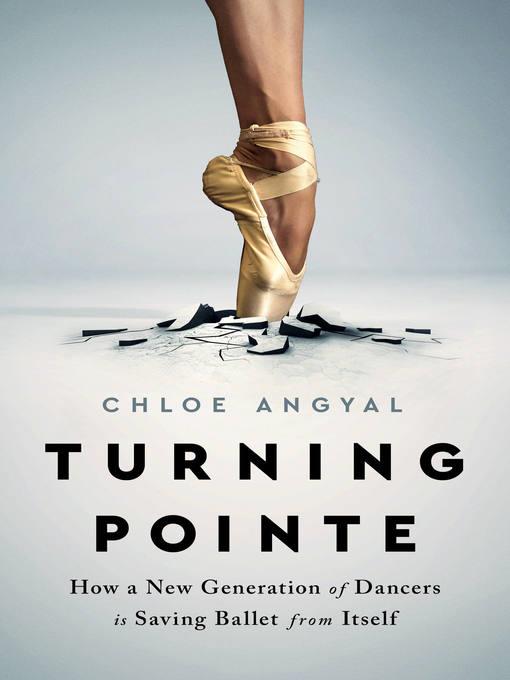
Turning Pointe
How a New Generation of Dancers Is Saving Ballet from Itself
کتاب های مرتبط
- اطلاعات
- نقد و بررسی
- دیدگاه کاربران
نقد و بررسی

April 1, 2021
As the song said, everything was beautiful at the ballet. Offstage, however, there is another tune, one of jarring chords of racism, sexism, and elitism, at odds with the ethereal beauty onstage. After interviewing dancers, dance teachers, choreographers, doctors, parents of dancers, and others, journalist Angyal found that ballet "is cracking under the weight of multiple interlocking crises, some of them of its own making." Impossible standards of beauty and thinness, overwhelming whiteness in casting and choreography, and a workforce made up mainly of women but managed almost exclusively by men are some of the issues that threaten the existence of this beloved art form. Chapter titles--including "The Hidden Curriculum," "A Tolerance for Pain," "The Unbearable Whiteness of Ballet," and "Princes and Predators"--characterize some of the systemic problems that must be addressed if ballet is to survive. Change is coming, Angyal say, with many American ballet companies now pledging to become more inclusive in their training and hiring, and in the new works and repertoires they commission. Angyal's reporting is thorough and compelling, and some of the stories she relates are heartbreaking. A filmography and a bibliography will aid those who wish to delve deeper. VERDICT Required reading for anyone who loves ballet and cares about its future.--Carolyn M. Mulac, Chicago
Copyright 2021 Library Journal, LLC Used with permission.

March 15, 2021
A journalist takes a hard look at social injustices in ballet and how to end them. Angyal argues that as ballet schools and companies cope with Covid-19, they face a threat older than the pandemic. The ballet world is in crisis, "made fragile and brittle by years of inequality and rendered dysfunctional by sexism, racism, elitism, and a stubborn disregard for the physical and mental well-being of the dancers who make the art possible." Many of the ills the author laments have been covered in some of the ballet books published since Joan Brady's signal 1982 memoir The Unmaking of a Dancer: injuries, burnout, eating disorders, taunting of male dancers as "sissies," and brutal treatment by Svengalis like George Balanchine. But Angyal substantially updates the story by highlighting persistent social injustices, such as relegating Black male dancers to "comic sidekick roles, the Mercutio to the white man's Romeo," and sidelining LGBTQ+ talent. She also shows how trailblazers have fought back with actions such as the founding of the Manhattan-based Ballez company for lesbian and gender-nonconforming dancers. Drawing on interviews with insiders who include artistic directors and principal dancers, the author is particularly insightful about companies' "doublespeak" on issues like thinness. One psychiatrist noted that ballet masters--no longer able to tell dancers to lose weight without risking criticism--speak in code such as, "You need to be more 'toned'....Every dancer knows that means they have to lose five pounds." Angyal slights some of the broader social and economic forces that have contributed to ballet's problems, such as declining U.S. audiences for high culture and the role government regulators might play if discrimination or unfair labor practices are involved. However, she ends with clear, well-reasoned recommendations that schools and companies anywhere could adopt--a list that, in itself, might be the spark many need to make overdue changes. A vigorously reported critique of common policies and practices in the ballet world.
COPYRIGHT(2021) Kirkus Reviews, ALL RIGHTS RESERVED.

April 26, 2021
In this captivating debut, journalist Angyal mounts a thorough examination of classical ballet’s fraught history of racial, sexual, and class bias and the reckoning from within that’s pushing to change it. “If ballet survives,” she writes, “it will be because of the individuals and institutions who are demanding that it do better.” Drawing from interviews with the dancers, teachers, and artistic directors working to do just that, Angyal reveals the systemic inequality propping up a fragile ecosystem that, for over a century, has denied opportunities to Black dancers and those who don’t “look really, really fit.” However, in the past decade, she notes, dancers have been fighting back, filing harassment lawsuits and establishing such trailblazing companies as Ballez, which is “just what it sounds like... lesbians doing ballet.” While in the past, dancers learned “to physically submit, to disregard their feelings,” today—and even more so, Angyal notes, in the wake of the Black Lives Matter protests—they are speaking out against double standards favoring males, arbitrary rules about weight, and the lack of racial diversity in the industry. Timely and thought-provoking, this book is a must for ballet lovers and anyone interested in the cultural conversation.

May 1, 2021
According to a 2019 estimate, there are 53,000 dance schools teaching ballet in the U.S. These educational institutions are under threat of extinction, and that is not just due to the restrictions of the COVID-19 pandemic. Angyal, a journalist and former dancer, raises the curtain and goes backstage to reveal why this beloved cultural tradition is imperiled. The individuals she profiles in her reporting are all involved in ballet in some way, from teachers and students to dancers, parents, healthcare professionals, and choreographers. Angyal roots out several factors that contributed to the vulnerability and dysfunction of ballet in today's society, beginning with its Eurocentric ideals and demand for a particular physical form of perfection. She then explains why the often-prohibitive costs of training and performing, more insidious exclusionary practices, the lack of interest among boys, and the emotional and physical tolls of a dedicated ballet practice have all played a part in bringing the future of ballet to a crossroads. If ballet is to survive and thrive, Angyal declares emphatically, there must be a seismic shift. Change is imperative.
COPYRIGHT(2021) Booklist, ALL RIGHTS RESERVED.

























دیدگاه کاربران